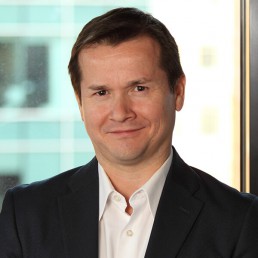Future of work: navigating uncertainty through agility
In his latest blog post relating to Future of Work, Curzon Managing Consultant Rodrigo Quezada Dighero in collaboration with Silviu Paraoan, explores how an agile approach focused on people and customers can lead to competitive advantage. This is particularly important now, as businesses are navigating uncertainty caused by COVID-19.
How employee and customer centricity are the key to an agile organisation
In Q4 2019, companies were finalising growth targets, key priorities, strategy, hiring needs and budget. Yet many businesses have spent 2020 in survival mode, putting the 3 year strategy on hold to necessitate a short term focus on business continuity.
Now, as many businesses enter Q4 2020, leaders revisit the original 3-year strategy plans as they look towards recovery. This inflection point is a great opportunity to adapt to the new world order and practice strategic foresight, as J. Peter Scoblic would say. In fact, this is not just an opportunity; the reality demands that you revisit strategy, adapt, and align your capital expenditure to this new paradigm. Becoming agile is the name of the game, to remain in the game, and to stay ahead of the rest of the players amid the disruption. In this new reality Winner takes All, and to be one, you need, you really need to reassess, adjust and plan your strategy.
Business continuity is one way of responding to disruption. But many people – including me – hold the belief that business continuity won’t be enough. Furthermore, it could put you behind competitors and faced with the risk of becoming obsolete. The time is now to think holistically about how to create opportunities in this new reality and adjust your business and operating models to serve the current and future needs of customers and employees. Two key areas are:
The agile organisation – how are you going to create an organisation that is adaptable, flexible and agile? When I talk about agile, I don’t mean a system. I’m referring to an agile organisation mindset characterised by collaboration and creativity. This means setting up the supply chain, procurement, and people strategies. It means employee engagement and training to encourage creativity and innovation from sales and marketing to operations and supply chain. It means developing a strategy to strive and thrive.
Customer centricity – how are you going to deliver products and services? Businesses will need to evolve to serve in this new environment in which customers have different expectations and needs.
The agile organisation
As you conduct your strategic thinking on this first area, there are a few key concepts to bear in mind:
- Overcommunication is key – align employees behind strategic priorities through clear and empathetic communication
- Use technology to augment, not replace, people
- Focus on people instead of processes
- Be flexible
- Collaborate – look for cross-functional collaboration. Maybe it’s time to start building that Business Ecosystem we have been theorising about for so long and make this opportunity a long term approach
- Keep it simple – this is not a time for dense multi-page documents. The agile approach of single-page, action-oriented documents with crystal clear communications is the order of the day.
- Embrace the new cultural and behavioural shifts
Customer experience
How will companies and their operations evolve to recreate the customer experience? Changes will of course create both challenges and opportunities in technology and creative approaches to developing new ways of delivering new systems and products. Done well, this can create significant competitive advantage.
The reimagining of customer experience is a challenge shared across industries. For example, how is banking going to change to better serve its customers? What will supermarkets do to enhance the shopping experience in this new environment?
According to an article in the Harvard Business Review, Bank of America converted more than 3,000 employee roles to meet the demand of additional customer calls during the crisis. In China, companies began an employee “sharing” program across the grocery store industry to meet the need for the delivery of grocery store items.
Agility is key to navigating uncertainty and understanding, meeting and exceeding new, evolving and emerging customer expectations.
Recalibrating strategy
The process is not about recreating or redesigning your strategy. It’s about realigning and calibrating what you had to serve in this new environment. What is the gap that has been created between your previous strategy and this new normal, and how are you going to serve your customers?
From my experience, you can do it from four dimensions:
- Digital – What technology is yet to be discovered or that is in place today that can help you to bridge that gap?
- Systems and processes – consider what current systems and processes will need to be replaced, modified, or switched to allow a better level of flexibility? What can be changed to allow employees to perform their job functions with excellence?
- Capabilities – how are you going to develop the required capabilities into your people for them to identify those gaps and cover them through the digital dimension or processes and systems?
- Physical location – covers the physical location. It is common to hear industry leaders talk about a spike in satellite offices. Is that the right option for you? Do you need to rethink your footprint or can you take advantage of your current location and layout to benefit new operations?
Finally, the most critical part of transformation is collaboration. By listening to employees and customers, you can strategise, realign the operations, and quickly redeploy the strategy in an agile way within the new normal environment.
A few companies are taking actions into this direction, and results are actually promising. One clear example is Nike which beat profit estimates in the quarter ending August 31st 2020. With physical sales decreasing due to COVID-19, Nike shifted focus to direct sales to consumer and digital channels. Their adjustments in strategy led to 82% increase in digital sales.
Key questions for leaders
- How will you quickly adjust your business strategy and associated goals to reflect the turbulence in the marketplace and maintain a competitive advantage?
- Is your workforce engaged, productive, and healthy during the continued disruption?
- Is your business learning and adapting to be prepared for the next disruptor?
- How has your service or offer changed because of COVID? (Front office and back office)
- How has overall the customer experience changed in your business/sector due to COVID?
- How have you been adapting your operations over the last 6 months and how are they going to keep evolving based on needs?
These questions should help you to identify areas of focus and strategic priorities that your people can work towards.
The time to act is now
We work with businesses to deliver an agile framework to determine the key factors to quickly adapt, optimise people strategy and enhance your digital capabilities. Ultimately our work helps businesses to grow, improve customer retention and discover new opportunities.
CONTACT US TO FIND OUT HOW WE CAN HELP
Future of Work insights
Return to Curzon: Rachna Trehan to lead ‘Intelligent CX’ offering
We are delighted to welcome Rachna Trehan to Curzon Consulting as Associate Partner. She will be leading the Intelligent CX service line. Rachna previously worked at Curzon from 2007 – 2014. Since then, she has advanced customer and digital strategy for clients at Accenture, Baringa and Ember Services.
Rachna answers our questions on reasons for joining Curzon and what’s in store for our Intelligent CX service line.
How did Curzon set you up for a career in consulting?
Very early in my career I learned to focus on doing the right thing for the client and doing it well. During my first tenure at Curzon, I learnt what drives businesses, how to problem solve, how to construct an approach to resolve the problems and how to make the solutions stick. Learning these core consulting skills gave me confidence that I could solve client issues in any industry. In addition to this, I started working directly with the partners of the firm and with the clients within hours of joining Curzon. I learnt by observing these brilliant minds at work and started to pick up their thought process and how to breakdown the problem statements into root causes and work packages. This live experience was far above what any training programme could give me. These skills helped me thrive in consulting firms later in my career.
What have you been up to since leaving Curzon in 2014?
Since leaving Curzon in 2014 I decided to remain in the same field and further develop my programme leadership and account management skills. I have specialised in the Customer Space and have built thought leadership around it. I have worked in large, medium sized and small consulting firms and have been lucky enough to work alongside really intelligent people who deliver real impact for clients. Throughout this time I saw the value that consulting can bring to our clients professional life and help in their own personal development. My passion and respect for my profession has gone up greatly and I hope it rubs off on my new colleagues/ clients.
Why return to Curzon Consulting?
Curzon always felt like home for me. The company culture is based on doing the right thing for the clients, building trust and developing skills rather than templates. It doesn’t compromise on quality and focusses on delivering real impact to the top/bottom line. I like the fact that each consultant in Curzon takes the role of a coach/trusted advisor for the clients. Curzon focuses on building strategic partnerships with clients, helping them achieve their objectives, rather than a narrow approach. The client relationships go beyond the immediate projects and we often help contribute to clients’ career growth. The Curzon team is more like a family and has each other’s backs. I am really looking forward to being a part of that team again.
What are you most looking forward to?
I’m looking forward to establishing and strengthening our Intelligent CX service line. These are exciting times in the customer space where we have seen rapid digitalisation over the past few months. There has been a change in customer’s needs and expectations. Our clients are now looking at not just sustaining and further building on the AI powered customer focussed technologies but also on organising themselves in such a way that they are ready to deal with and future surprises. This means they need different operating models, service excellence will be redefined, employee satisfaction is finally gaining as much attention as customer satisfaction and new ways of measuring success will be required. I am looking forward to helping our clients in these areas through our Intelligent CX service.
Over the coming months we will be sharing our thoughts on customer experience.
Rachna Trehan returned to Curzon Consulting in November 2020 as Associate Partner. We are delighted to welcome her back. Contact Rachna to arrange an introductory meeting.














